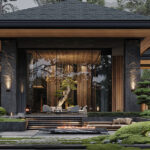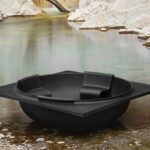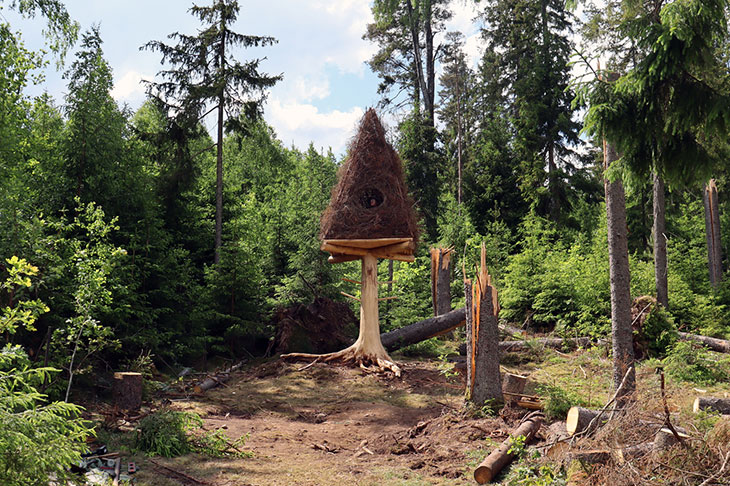
A couple running Esperöd Farm near Lilla Edet in southern Sweden contacted architect and artist Ulf Mejergren to explore the idea of creating a land art trail in their forest. Initially, they considered using leftover materials from a traditional log cabin they were constructing for the art. However, just a few weeks after their first meeting, a severe storm struck the town, toppling over 200 trees on Esperöd Farm. Although devastated initially, the couple saw this as an opportunity to use the fallen trees as artistic material.
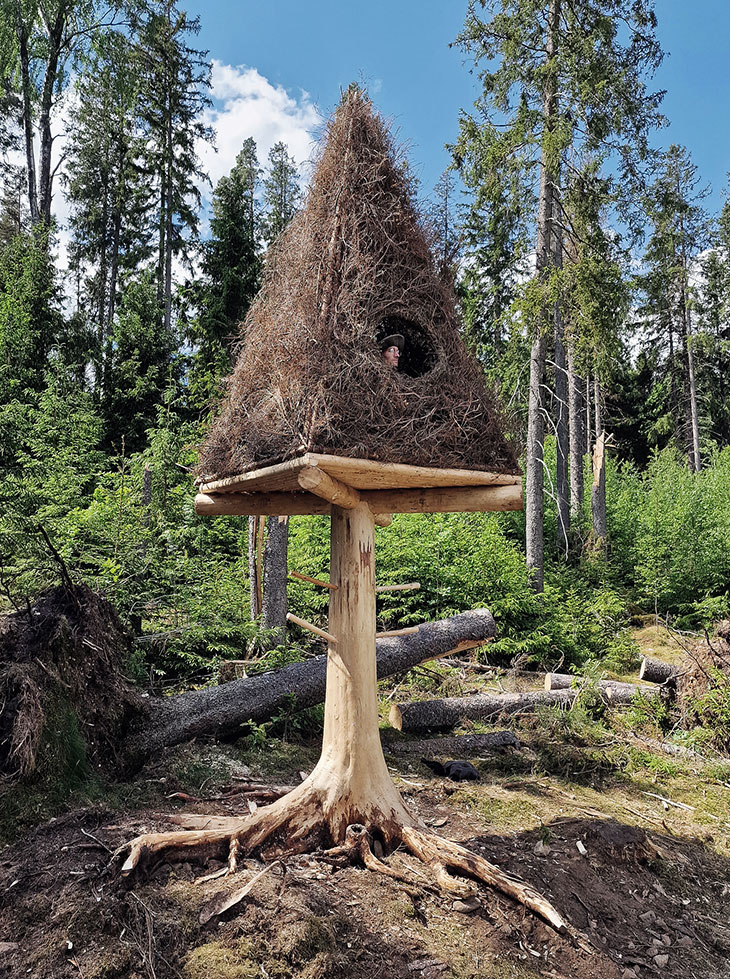
Mejergren conceived the idea of resurrecting a fallen tree and transforming it into an art piece that could also serve as a lookout. To emphasize the resurrection theme, they decided to create a structure inspired by the “njalla,” a traditional Sami building found in northern Sweden where an uprooted tree stands supported solely by its roots. This concept aligned perfectly with the unexpected bounty of fallen trees, turning a natural disaster into an artistic opportunity.

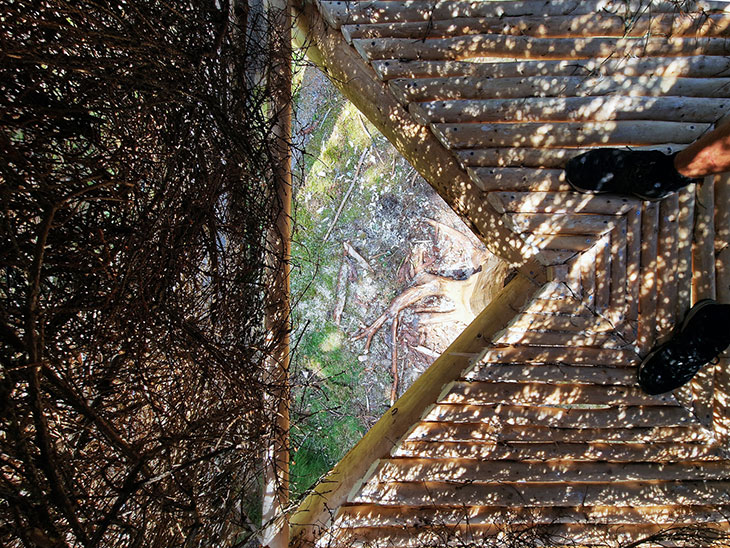
After surveying the area, they selected a spruce tree with largely intact roots. They cleared stones and dirt from the uprooted tree with a pickaxe and cut it to an appropriate length. The tree was then placed on a flat patch in the forest and leveled with stones to ensure it stood straight. In keeping with the traditional methods used in their log cabin, they applied similar techniques to the tree, ensuring the project’s authenticity and coherence.
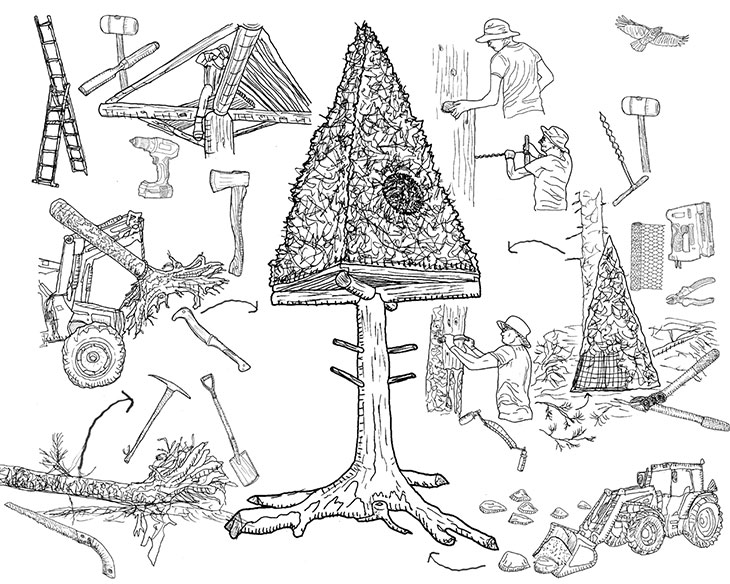
Once balanced, they constructed a cross from two large logs taken from the upper stem of the fallen tree. This cross formed the structural support for a platform, which was then covered with a floor of thick branches that had their bark peeled off. A pyramid made from four triangular walls of dead spruce branches was placed on top of the platform, resembling a tree crown. This eerie, formal shape created a striking visual effect. A circular hole in the pyramid formed a window, providing a panoramic view of the farm and surrounding lands.

Four holes were drilled into the tree stem, with sticks hammered in to serve as a ladder, allowing access to the platform. The Zombie Tree is the first artwork on this new trail and symbolizes the resurrection of the land. It stands as an example of nature’s resilience and the ability to find beauty and purpose in the aftermath of destruction.
The project is funded by LEADER, the European Agricultural Fund for Rural Development, which supports innovative projects to strengthen rural communities. The collaboration between Ulf Mejergren, Travis Child, and Therese Corneliusson showcases a unique blend of traditional methods and contemporary artistic vision, bringing new life to the forest of Esperöd Farm.


